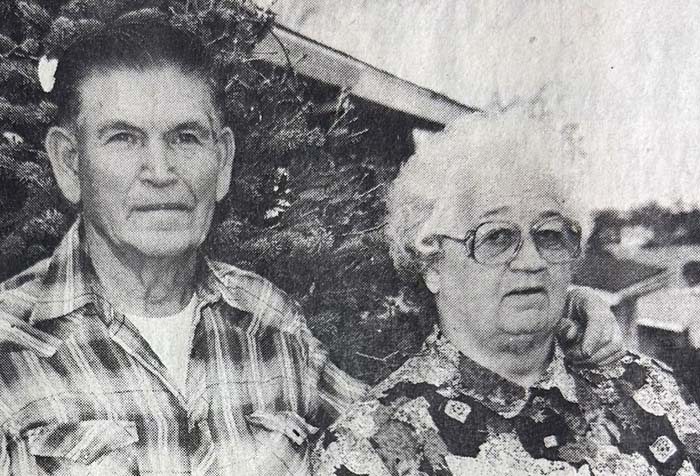Hermiston History: Hermiston couple wraps up Christmas Spirit Award in 1998
Published 5:00 am Wednesday, December 20, 2023

- The Good Shepherd Community Health Foundation honored Mel and Bonnie Phillips in December 1998 with the Christmas Spirit Award.
25 YEARS AGO
Dec. 22, 1998
Mel and Bonnie Phillips received the Good Shepherd Community Health Foundation’s Christmas Spirit Award in December 1998 for expressing Christmas spirit throughout the year.
Among other things, the couple helped people change flat tires, babysat and cleaned chimneys for their friends.
“It’s no big deal for us to help,” Bonnie Phillips said.
Each grew up in rural communities, with Mel on oil farms in the Midwest and Bonnie on rangeland in South Dakota. These sparsely populated areas, they said, required special effort and camaraderie among neighbors.
“We helped them do their work, they’d help us do ours,” Mel Phillips recalled.
Both left the Midwest, moving to Hermiston where they met in 1971. Eight years later, the couple married and assumed active roles in the community. Bonnie taught fifth, sixth and seventh grade in Stanfield for 30 years, while Mel worked at the Oregon State University Extension Office.
Along with recognition, the couple received a plaque and a gift package from the hospital.
This is the third year the hospital has bestowed this honor upon deserving individuals. Rev. John Thurlow was the first recipient of the Christmas Spirit Award, while Dennis and Cathy Barnett were recognized in 1997.
50 YEARS AGO
Dec. 20, 1973
Hermiston’s exchange students, Inger Christiansen, of Norway, and Sam Hashimoto, of Japan, were about to get their first taste of an American Christmas. Also, they would share some of their holiday customs.
After Christmas, a special celebration that Christiansen described as the Norwegian equivalent of Halloween takes place between Christmas and New Year’s. Dressed in costumes, children masquerade at the houses of friends and neighbors until their identity is determined, at which point they receive desserts.
Also, Christiansen said Norwegians put their Christmas trees up on Dec. 23 and keep them through mid-January.
While Christmas is the climax of the winter holiday season in the United States, Hashimoto said the New Year dominates Japanese holidays. On New Year’s Eve, each city’s temple bell rings 108 times to acknowledge the 108 bad charities of humans. Each ring was meant to eliminate an undesirable characteristic, Hashimoto explained.
“To cleanse oneself for the New Year,” he said.
Although this Christmas would be starkly different from all their previous ones, the two exchange students were excited about the experience.
75 YEARS AGO
Dec. 23, 1948
Umatilla Mayor Paul Follett predicted the area would soon experience immense growth.
Follett based this prediction on several factors, starting with the continued effort to bring in new individuals and industries. He pointed out how the short distances between Hermiston, Umatilla and the McNary Dam facilitated cooperation among cities to solve problems that would benefit the whole area.
One such issue, Follett said, was housing. But he claimed it would not be an issue for long, commending Hermiston home builders for their efficient and expedient work. Follett also shared that the Tidewater-Shaver Barge Lines would handle more than 1 million tons of construction materials for the area in the coming year. Although some of this would be allotted for city improvements, most of the materials were designated for the dam.
On that note, Follett urged Oregon residents to keep supporting the hydroelectric facility and pointed to the countless economic, employment, power and industrial benefits it would yield.
Citing all these examples of potential within the region, Follett even went as far as to declare the cities would develop into a metropolis.
90 YEARS AGO
Dec. 21, 1933
Oregon public schools were about to see a major increase in funding, thanks to a Dec. 10 sales tax bill for school relief.
In analyzing the state tax commission’s estimate of likely revenue, State Superintendent C.A. Howard predicted a drastic decrease in taxes. He claimed the bill would reduce county tax levies by $1 million in addition to cutting $3 million a year from school district taxes across the state.
Not only was the bill expected to cut taxes, but it would generate increased revenue. Similar actions in other states indicated this Oregon bill could produce $4 million annually. Three-quarters of the amount would be distributed to school districts in proportion to their enrollment figures. This equated to each of the 7,500 teacher-classroom units in the state being allotted approximately $400. The remaining 25% would go toward county school funds — based on estimated valuation.
Howard was confident this bill would enable public schools to flourish.



